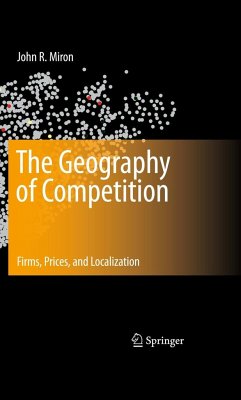This book provides a comprehensive, up-to-date, and expert synthesis of location theory. What are the impacts of a firm's geographic location on the locations of customers, suppliers, and competitors in a market economy? How, when, and why does this result in the clustering of firms in space? When and how is society made better or worse off as a result? This book uses dozens of locational models to address aspects of these three questions. Classical location problems considered include Greenhut-Manne, Hitchcock-Koopmans, and Weber-Launhardt. The book reinterprets competitive location theory, focusing on the linkages between Walrasian price equilibrium and the localization of firms. It also demonstrates that competitive location theory offers diverse ideas about the nature of market equilibrium in geographic space and its implications for a broad range of public policies, including free trade, industrial policy, regional development, and investment in infrastructure. With an extensive bibliography and fresh, interdisciplinary approach, the book will be an invaluable reference for academics and researchers with an interest in regional science, economic geography, and urban planning, as well as policy advisors, urban planners, and consultants.
From the reviews:
"The author has crafted a carefully written textbook which I recommend both to students in competitive location theory ... and to practitioners with an interest in the discipline. One of the book's nicest aspects is its detailed discussion of the assumptions at the basis of each model. This gives the author the chance to assess the usefulness and limits of each approach, and to relate the entire set of models in terms of questions that can (or cannot) be answered in that specific framework." (Gaetano Alfredo Minerva, Scienze Regionali, Vol. 11 (2), 2012)
"The geography of competition: Firms, prices, and localization ... is a well-crafted, clearly written book that fully completes the agenda it lays out from the outset. It provides an exhaustive, in-depth and excellent study of one of the most important fields in spatial economics. ... It is constructed and written in a clear manner. ... It is an invaluable reference for researchers as well as students who are concerned with economic geography, regional science, urban economics, location theory, civil engineering, transportation, and urban planning." (Wei-Bin Zhang, Papers in Regional Science, Vol. 91 (1), March, 2012)
"The author has crafted a carefully written textbook which I recommend both to students in competitive location theory ... and to practitioners with an interest in the discipline. One of the book's nicest aspects is its detailed discussion of the assumptions at the basis of each model. This gives the author the chance to assess the usefulness and limits of each approach, and to relate the entire set of models in terms of questions that can (or cannot) be answered in that specific framework." (Gaetano Alfredo Minerva, Scienze Regionali, Vol. 11 (2), 2012)
"The geography of competition: Firms, prices, and localization ... is a well-crafted, clearly written book that fully completes the agenda it lays out from the outset. It provides an exhaustive, in-depth and excellent study of one of the most important fields in spatial economics. ... It is constructed and written in a clear manner. ... It is an invaluable reference for researchers as well as students who are concerned with economic geography, regional science, urban economics, location theory, civil engineering, transportation, and urban planning." (Wei-Bin Zhang, Papers in Regional Science, Vol. 91 (1), March, 2012)








